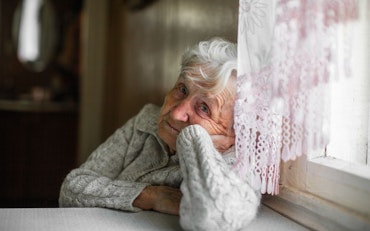Government data shows increase in care staff, sector highlights resourcing constraints
The Federal Government has released the findings of its 2020 Aged Care Workforce Census Report, collected between December 2020 – January 2021, which shows a 38 percent increase in direct care staff across all disciplines of the sector since 2016.
![<p>While direct care workforce numbers are up since 2016, there has been difficulty keeping workers across all aged care staff roles. [Source: Shutterstock]</p>](https://agedcareguide-assets.imgix.net/news/articles/news/articles/2_9_2021-Aged-Care-Workforce-Census.jpg?fm=pjpg&format=auto&w=550&q=65)
While direct care workforce numbers are up since 2016, there has been difficulty keeping workers across all aged care staff roles. [Source: Shutterstock]
There were a recorded 240,317 direct care workers across all aged care areas in 2016 and 331,951 direct care workers across all disciplines in 2020.
This Census is conducted every four years to gauge the growth of the sector and since the last report there has been a significant increase in nursing staff numbers and better skilled workers.
The Government is also excited to see that over the last four years they have been successful in attracting a younger cohort of workers to the sector with just over half (52 percent) of the direct care workforce now under the age of 40.
Minister for Senior Australians and Aged Care Services, Richard Colbeck, says the workforce data is providing a new benchmark for the Government while further growing the aged care workforce as part of their ‘five year, five pillar’ plan.
“Right across the aged care sector we continue to see examples of a workforce that is determined to make individual care a priority,” says Minister Colbeck.
“This has been showcased during the pandemic as employees – particularly in residential care settings – have put the needs of residents ahead of their own.
“From direct care staff to those working behind the scenes, these are workers who have been there for our loved ones when family and friends could not.”
While there has been success at attracting workers to the sector, keeping them in the workforce is a different matter. Over a 12 month period (between Nov 2019 – Nov 2020), 37 percent of Nurse Practitioners (NP) and Registered Nurses (RNs) left their employer to work either at another facility or to leave the workforce altogether.
As of 2020, there are 277,671 residential aged care workers, and 267,751 are permanent or casual positions, which is 14 percent more than in 2016. Additionally, 208,903 of those workers are in direct care roles in nursing homes.
In the Home Care Package (HCP) sector there are 80,430 workers with 80 percent (64,019) being direct care staff. The Commonwealth Home Support Programme (CHSP) workforce is now sitting at 76,096 workers with 37 percent (59,029) working as direct care staff.
While there was an increase in workforce numbers, during the time of the Census there were around 22,000 direct care role vacancies across the aged care sector.
One positive of the report is that 66 percent of personal care workers in 2020 hold a Certificate III or higher, as well as another two percent of the workforce is currently studying a Certificate III or higher.
For those in the HCP sector, the number of workers with a Certificate III or higher was 63 percent and for the CHSP it was 71 percent.
Additionally, 80 percent of aged care facilities reported having a Registered Nurse (RN) on duty overnight for every day, and a further 9 percent said they had a RN on call evernight for every day.
Minister Colbeck said the dedication of aged care employees is an important factor of their aged care reform plan to ensure the workforce is strong and supported.
The Federal Government allocated $652.1 million out of their $17.7 billion aged care reform package, released in May’s Budget, to growing the workforce numbers over the next five years.
Minister Colbeck says, “Aged care workers are the engine room of the reforms and key to ensuring respect, care and dignity for senior Australians.
“The Census also benchmarks the attributes and skills central to the delivery of quality aged care – a useful reference for us as we move through our $17.7 billion, five year, five pillar reform of aged care”
Industry peak body, Leading Age Services Australia (LASA), says that while it is good to have new Census data showcasing the workforce, the organisation is concerned about how some of the data has been presented, including lack of comparisons with numbers from 2016.
Chief Executive Officer of LASA, Sean Rooney, says LASA is still looking through the details of the data, but it does look like more younger people are entering the sector.
“It certainly shows the residential care workforce getting younger, continuing the trend seen in 2016. It’s less clear what is happening with the home and community care workforce. According to the 2016 data, this group of workers was getting older rather than younger,” says Mr Rooney.
“Unfortunately the 2020 [report] doesn’t seem to have been published in a way that allows a simple comparison with the last Census. [For example], they have split it into [home care] and [CHSP], and they publish different age ranges.
“The residential care workforce and home and community care workforces have all grown strongly, reflecting significant increases in demand. However, recruitment has become increasingly difficult in recent years – and job ads data shows a huge increase in demand for nurses and care workers in the last year.
“Data held by LASA also suggests a significant increase in staff turnover, though we cannot confirm this through the Census because the relevant questions were not included this time. Other employee engagement data supplied by BPA Analytics suggests that this is mainly driven by staff facing more pressure – reflecting resourcing constraints across the system.
“The workforce data does contain hints at some other interesting trends. Average hours worked appears to be increasing in residential care but falling in home care. Direct care staff also seem to be increasing as a share of overall employment in both residential care and home care.”
Mr Rooney says they will continue to review the data over the coming days to see what else the Census Report holds.
Also included in the Census were the negative impacts of COVID-19 on the workforce, including drops in available staff and volunteers in aged care facilities.
Nine percent of aged care facilities reported a direct care workforce decrease, whereas 44 percent reported an increase in staff. Across the board, volunteer support was hugely impacted and 74 percent of facilities reported a decrease in volunteers.
Similarly, 33 percent of home care providers reported a decrease in volunteer levels and personal care workers (21 percent) because of COVID-19. About 57 percent of providers reported a decrease in volunteer levels and 28 percent reported a loss in personal care workers due to COVID-19.
This survey collected data from 1,329 aged care facilities, 616 Home Care Package (HCP) providers, and 505 Commonwealth Home Support Programme providers. Due to COVID-19, this survey did not collect data directly from aged care workers.
To read the full 2020 Aged Care Workforce Census Report, visit the Government health website. Or to read 2016’s Census report, click here.










